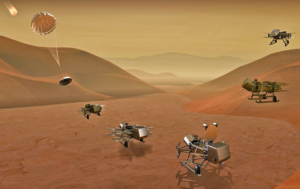Bridging the Digital Divide with Satellite Internet
Reliable internet access is no longer a luxury—it’s a necessity for education, business, and everyday life. However, millions of rural Americans still struggle with slow or nonexistent broadband connections. Traditional solutions like fiber-optic cables are costly and difficult to implement in remote areas. Fortunately, advancements in satellite internet technology are now transforming connectivity, making high-speed internet more accessible than ever in rural America.
Why Rural America Has Struggled with Internet Access
The lack of reliable broadband in rural America stems from several key challenges:
- Infrastructure Costs – Laying fiber-optic cables over vast, sparsely populated areas is expensive and time-consuming.
- Geographic Barriers – Mountains, forests, and deserts make it difficult to extend traditional broadband networks.
- Limited Service Options – Many rural areas are served by only one or two internet providers, leading to high prices and slow speeds.
- Government Policy & Funding – Broadband expansion efforts often prioritize urban areas due to higher population density.
Comparison of Internet Solutions in Rural America
| Technology | Speed | Availability | Latency | Installation Cost |
|---|---|---|---|---|
| Fiber-Optic | 1 Gbps+ | Limited | Very Low | Very High |
| DSL | 10–100 Mbps | Moderate | Moderate | Moderate |
| Satellite (LEO) | 50–250 Mbps | High | Low | Low-Moderate |
| Satellite (GEO) | 25–100 Mbps | High | High | Low-Moderate |
| Fixed Wireless | 10–100 Mbps | Moderate | Low | Low |
Key Takeaways:
- Satellite internet, especially Low-Earth Orbit (LEO) solutions, is closing the connectivity gap faster than any other technology.
- Fiber is the fastest but not viable for most rural areas due to cost and infrastructure challenges.
- Traditional satellite internet (GEO) has high latency, but newer LEO solutions significantly reduce this issue.
How Satellite Internet is Revolutionizing Rural Connectivity
The latest generation of satellite internet providers, such as Starlink, HughesNet, and Viasat, are using Low-Earth Orbit (LEO) satellites to provide high-speed, low-latency internet across the USA. Unlike traditional Geostationary Earth Orbit (GEO) satellites, which are positioned 22,000 miles above Earth, LEO satellites operate much closer, at 300–1,200 miles, improving performance.
Key Benefits of Modern Satellite Internet:
- Faster Speeds: Up to 250 Mbps, allowing streaming, gaming, and remote work.
- Lower Latency: LEO satellites significantly reduce lag, improving video calls and real-time applications.
- Wider Coverage: Can reach remote farms, ranches, and isolated communities where other internet options are unavailable.
- Quick Deployment: No need for underground cables—just a satellite dish and clear sky access.
Real-World Impact: How Rural America is Benefiting
Many rural communities are already seeing major improvements thanks to satellite internet expansion.
Case Study: Alaska’s Connectivity Revolution
In early 2024, Alaska saw a dramatic rise in internet access after Starlink expanded its coverage. Within months, thousands of households and businesses gained access to high-speed internet, improving telehealth, education, and business opportunities in the state.
Key Benefits Observed:
- Telehealth Expansion: More patients in remote locations can now access virtual healthcare.
- E-learning Growth: Schools in rural towns are offering online learning programs.
- Boosted Local Economies: Small businesses are expanding their customer reach online.
Challenges and Considerations for Satellite Internet Users
Despite its many advantages, satellite internet does have some limitations:
Cost: Starlink’s equipment costs around $599 with a monthly fee of $90–$120, which may be expensive for some users.
Weather Sensitivity: Heavy rain or snow can temporarily impact signal quality.
Network Congestion: During peak hours, speeds may slow down if too many users are online.
Government Regulations: Federal broadband expansion plans need to balance investments between fiber and satellite solutions.
The Future of Rural Internet: What’s Next?
The Federal Communications Commission (FCC) and private companies continue investing in better connectivity solutions. By 2026, an estimated 10,000+ LEO satellites will be in orbit, significantly improving speeds and reliability for rural users. Additionally, new AI-powered signal optimization will reduce latency and increase efficiency.
Upcoming Innovations:
- More Affordable Equipment – Expect lower hardware costs as demand increases.
- Enhanced Data Plans – More flexible pricing options to cater to different user needs.
- Hybrid Solutions – Integration of fiber and satellite internet for optimized performance.
Conclusion: The Future of Rural Internet is Bright
Satellite internet is rapidly transforming rural America, bringing fast, reliable, and affordable connectivity to millions of underserved residents. As technology continues to advance, speeds will improve, costs will decrease, and more Americans will gain access to essential digital resources.
[USnewsSphere.com / ADN]





